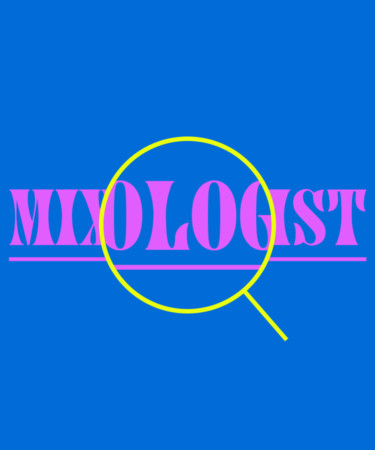Those who delight in such things as clear ice cubes and antique Nick and Nora glasses can probably reel off the important drinks revivals that spawned from the craft cocktail movement of the early 2000s. Most notable among them: freshly squeezed citrus juice, forgotten cocktails such as the Aviation and the Last Word, and dusty modifiers like crème de violette. But there are other notable resurrections that are less obvious even to seasoned mixed-drinks aficionados.
The term mixologist seems inextricably linked to sophisticated equipment like rotovaps and liquid nitrogen and finicky techniques such as acid adjusting. Much like molecular gastronomy, the very essence of mixology feels both modern but somehow also dated — a reminder of that brief post-internet but pre-smartphone era when bartenders and chefs rose to modern stardom. It may surprise many to therefore learn that mixology and mixologists are not as modern as they seem. Rather than a relic from the early aughts, the terms trace their roots back to the 1800s.
Google Trends proves a useful tool for tracing internet users’ interest in search terms over time. When we track searches for the word “mixology,” the tool shows us that interest in the word is roughly the same now as it was in 2004, which is as far back as the data goes. (There was a notable spike in interest in early 2014, most likely attributed to a short-lived ABC TV show of the same name that debuted at the time.) Ultimately, the Google Trend data tells us that mixology was already part of common parlance by 2004, which makes sense because the cocktail revival was already gaining a lot of steam by then.
But the world’s preeminent search engine offers another means of tracking words that started trending in the dark ages of pre-internet life: Google Books Ngram Viewer. The tool performs very much the same function as Google Trends, only basing its data on text scraped from physical paper and ink books (remember those?). Search the term mixology on this application and you’ll note a large spike in usage around the turn of the millennium. But it is here that we also learn mixology first appeared in published text in 1862.
It comes as no coincidence that this was also the very year Jerry Thomas published his seminal work, “How to Mix Drinks or The Bon-Vivant’s Companion,” a book many modern bartenders credit as being crucial to the craft cocktail renaissance. Without having a copy of the original edition, it’s impossible to be sure if or where the word mixology appears in the text, though Google Books certainly suggests it’s in there somewhere. Either way, there can be no doubt that the term was widely used by the end of the 19th century, with Delaware’s Joseph L. Haywood publishing his own cocktail book, “Mixology: the Art of Preparing all Kinds of Drinks,” in 1898.
Instances of the title “mixologist” in relation to the bartending profession stretch back even further. An 1856 edition of the monthly New York magazine The Knickerbocker informs us this was only part of the common, grandiose title of the time: “mixologist of tipulars.” Meanwhile, an 1866 edition of the Montana Post opted for an altogether more evocative take on the term, describing those proficient at whipping up drinks as “mixologists of fluid excitements.” Other accounts from the early 1900s are not so generous in their interpretation of the profession, with one describing mixologists as “dispenser[s] of liquid damnation.”
It’s also interesting to find multiple references of “well-known” mixologists during the late 18th and early 19th centuries. Given that modern recountings of American cocktail culture make no mention of figures like Henry Williams, “Handsome Harry,” and George Webb, we can assume that their repute was almost certainly local. Still, it brings a smile to the face to learn that celebrity bartenders are no more a modern creation than the mixologist title.
